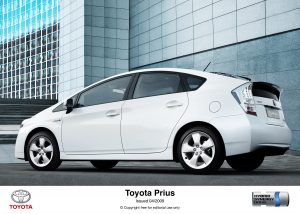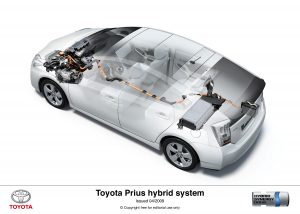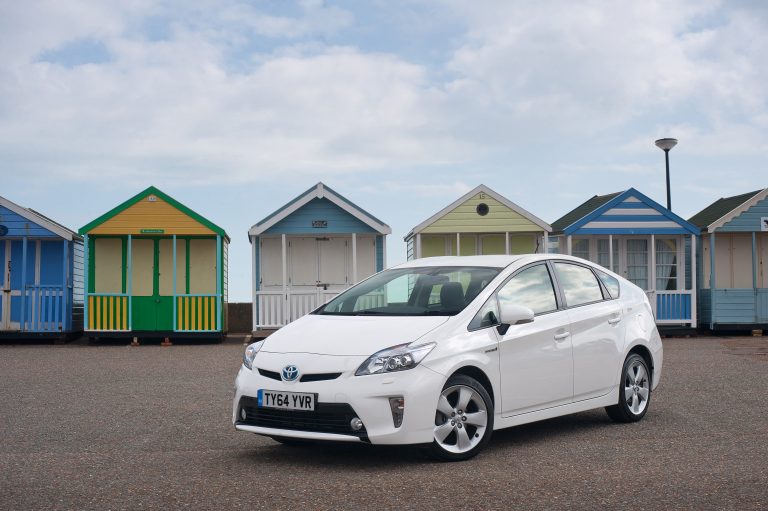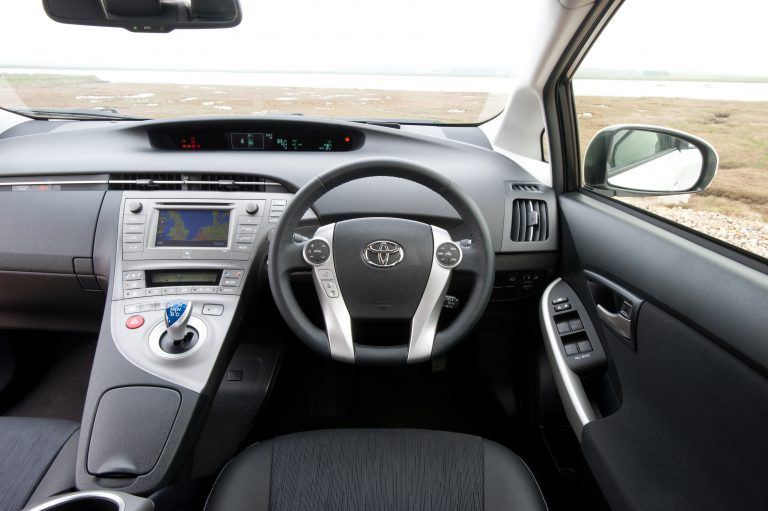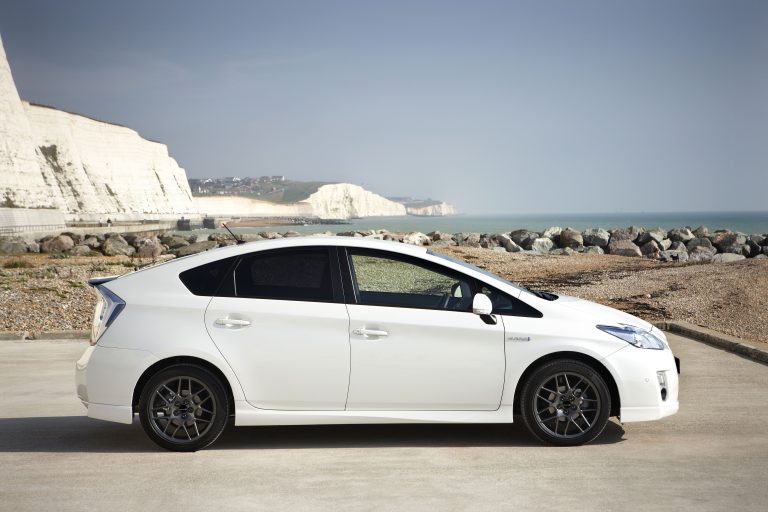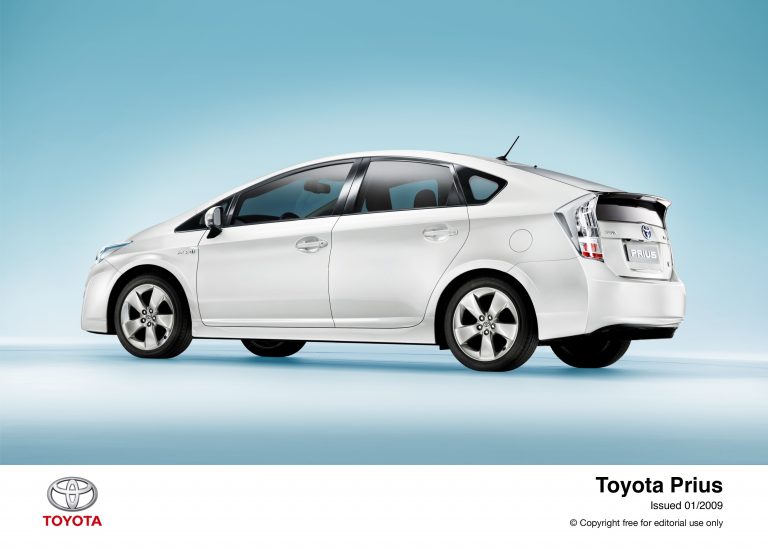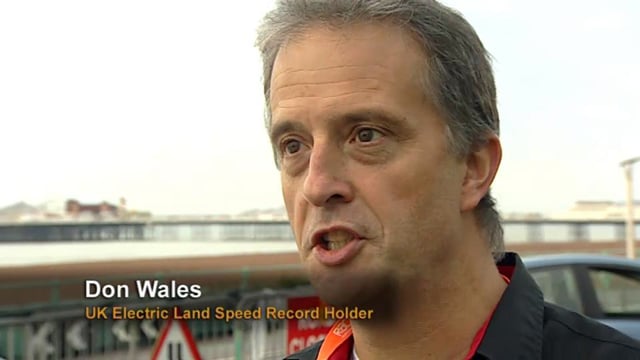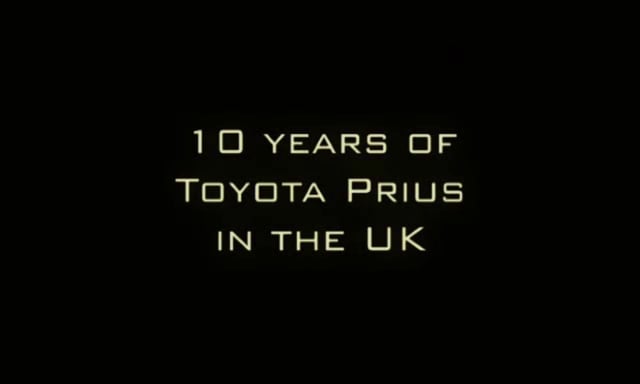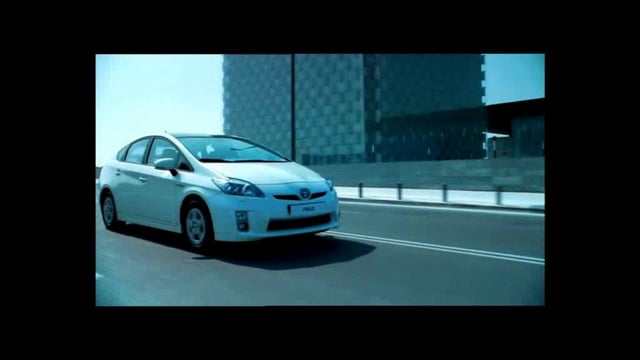New Toyota Prius Technology and Innovation
Press release No1: Hybrid Synergy Drive
KEY POINTS
- Next-generation of Hybrid Synergy Drive, the undisputed reference point for hybrid technology
- New Prius is a full hybrid vehicle, capable of running on petrol engine or electric motor alone, or combination of both
- Ninety per cent of components redesigned for lighter, more compact and efficient system
- Power increased by 22 per cent to 134bhp, fuel economy by 10 per cent (72.4mpg official combined cycle) and CO2 emissions down 14 per cent at just 89g/km
- New 1.8-litre VVT-i petrol engine using the Atkinson cycle for increased efficiency
It is said that when you are at the top, the only way you can go is down. Not so for the remarkable Toyota Prius, which this summer takes its advanced hybrid power technology and environmental leadership on to a higher level.
The new, third-generation Prius will not only be the world’s most technically advanced mainstream car, it will also demonstrate the real world benefits of Toyota’s market-leading hybrid powertrain, Hybrid Synergy Drive.
It will deliver emphatic improvements in fuel efficiency, environmental responsibility and driving performance.
When Hybrid Synergy Drive made its debut in the current Prius, it was voted 2004 International Engine of the Year, and went on to win the Green Engine of the Year title for the last five years in a row. For new Prius it has been comprehensively revised and improved, with more than 90 per cent of its components redesigned to create a lighter, more compact system, with a focus on increased power, further reductions in real-world fuel consumption and improved cold weather operation.
The result is that new Prius remains the undisputed reference point for mainstream vehicle hybrid technology, setting new standards in innovation, design and driving enjoyment.
System power output has been increased by 22 per cent, from 109 to 134bhp (110 to 136 DIN hp) and, with performance to match a conventional 2.0-litre petrol vehicle, new Prius will accelerate from nought to 62mph in 10.4 seconds.
At the same time overall fuel economy has been improved by 10 per cent, new Prius returning 72.4mpg in combined cycle driving. The adoption of a larger, 1.8-litre engine reduces the rpm during high-speed driving to give a 10 per cent gain in long-haul cruising fuel efficiency. And with more torque produced at lower engine speeds, new Prius offers more relaxed cruising performance, too.
Prius easily exceeds the Euro 5 emissions standards, producing 89g/km of CO2. And when operating in EV mode at speeds up to 30mph, it uses no fuel and produces zero exhaust emissions.
Hybrid Synergy Drive System Components
Unlike parallel or ‘mild’ hybrids, which use additional electric motor power purely to boost petrol engine performance, or ‘series’ hybrids, which rely on electric power alone to drive the wheels, new Prius is a full hybrid capable of running in petrol and electric modes alone, as well as a combination of both.
That means it delivers the energy-saving benefits of a series hybrid combined with the performance benefits of a parallel hybrid. It gives new Prius seamless acceleration and remarkably quiet operation, while also returning class-leading fuel efficiency and ultra-low emissions.
The system comprises a 1.8-litre VVT-i petrol engine, a powerful electric motor, a generator, a high-performance battery, a power control unit and a power split device, which uses a planetary gear set to combine and re-allocate power from the engine, electric motor and generator as required.
The key to the successful installation of Hybrid Synergy Drive within Prius’s front-engine platform is the housing of the electric motor, generator and power split device on a single, lightweight and highly compact transmission casing that is little bigger than a conventional gearbox. The new transaxle itself is smaller, 20kg lighter and benefits from a 10 to 20 per cent reduction in driveshaft energy losses compared to the current system.
1.8-litre VVT-i Atkinson Cycle Engine
A new four-cylinder, 1.8-litre VVT-i Atkinson cycle petrol engine replaces the 1.5-litre unit in current Prius. Generating 97bhp (98 DIN hp) at 5,200rpm and 142Nm of torque at 4,000rpm, it delivers higher torque at lower revs – a reduction of 300rpm at 75mph – and combines quieter running with a 10 per cent improvement in long distance cruising fuel economy.
Adopting the Atkinson cycle and a new, cooled exhaust gas recirculation system brings significant gains in fuel efficiency and emissions reduction.
Because the intake valves close late in an Atkinson cycle engine, compression is delayed. This creates a high expansion ratio for less compression, reducing intake and exhaust energy losses and converting combustion energy to engine power more effectively. As a result the exhaust temperature is lower than that of conventional engines. Cooled Exhaust Gas Recirculation reintroduces the cooled gas into the intake system, further reducing engine operating temperatures.
Together, these technologies reduce the likelihood of fuel enrichment being needed for cooling to protect the catalytic converter from overheating damage, thus improving fuel economy and emissions.
Prius has a new engine heat management system that improves fuel economy in cold weather and cabin comfort, using a heat recovery system and an electric water pump. Using an electric system in place of the water pump drive belt reduces mechanical losses and, as a result, the coolant flow rate can be controlled with greater precision, achieving better fuel efficiency.
80bhp Electric Motor
New Prius has a 80bhp (60kW) electric motor that works in tandem with the petrol engine to improve acceleration, and which powers the driven wheels alone when the vehicle is operating in EV mode. Compared to the motor used in the current Prius, it is 20 per cent more powerful, yet 33 per cent smaller.
During deceleration and under braking, the electric motor acts as a high-output generator to produce regenerative braking. This optimises energy management in the Hybrid Synergy Drive system by recovering kinetic energy that would normally be lost as heat as electrical energy for storage in the high-performance battery.
Power Control Unit
The Power Control Unit (PCU) consists of a voltage boost converter, an inverter and a DC/DC converter, controlled by a motor control ECU that receives commands from the hybrid vehicle control ECU.
The new inverter, 36 per cent lighter and 37 per cent more compact than before has faster switching for improved efficiency. It can convert the battery’s direct current into a higher, 650V (+150V) alternating current to drive the electric motor and, on occasion, the generator, giving significantly improved PCU performance.
High Output Battery
Output from the nickel-metalhydride Hybrid Synergy Drive battery, a proven reliable battery technology, has been increased to a maximum 27kW (+2kW), allowing new Prius to be driven in EV (electric vehicle) mode, using electric motor power alone.
The battery has been positioned to minimise impact on cabin space. The efficiency of its cooling system has been improved with a significant increase in fan capacity.
Three On-demand Driving Modes
New Prius’s seamless transmission has three ‘on-demand’ driving modes: EV, ECO and POWER to increase fuel economy, driving efficiency and performance according to driving conditions.
From start-up and at speeds of less than 31mph (50km/h), new Prius automatically operates in EV mode. The driver can also select EV mode manually, with the car’s driving range determined by the level of battery charge.
In ECO mode, throttle response to aggressive accelerator pedal inputs is reduced and the air conditioning control is adjusted for improved fuel economy. Depending on driving conditions, ECO mode can help drivers achieve a 10 to 15 per cent reduction in fuel consumption.
Finally POWER mode modifies response to throttle inputs, boosting power to improve acceleration and give greater driving pleasure.
ENDS

